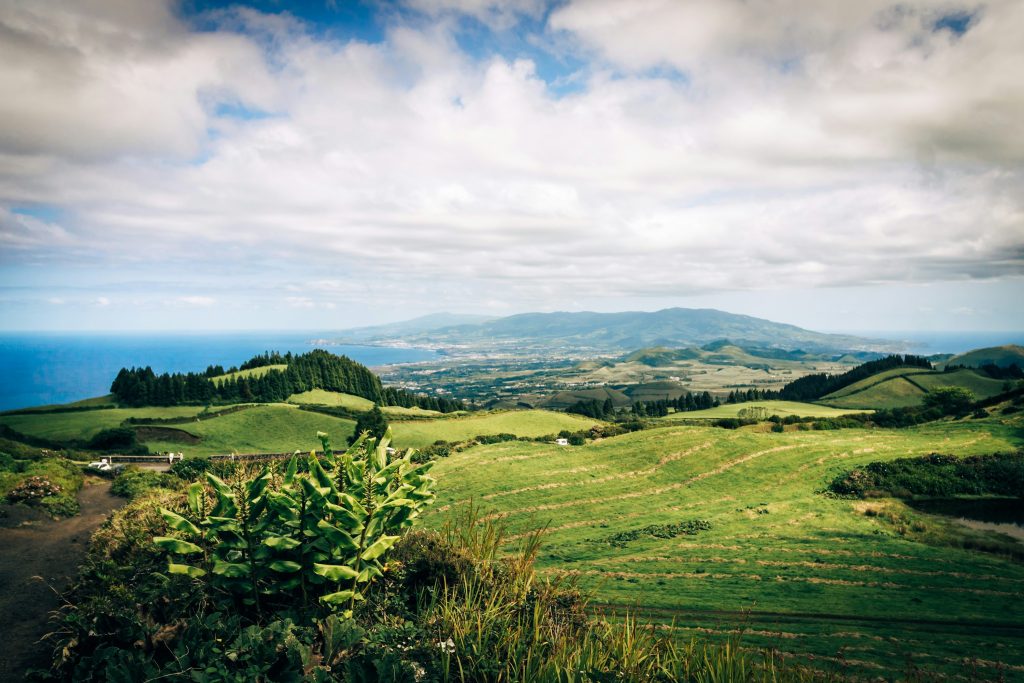
Welcome to the Azores – Portugal’s Best-Kept Secret (But Not for Long)
Imagine if Hawaii and Ireland had a baby, but it spoke Portuguese and was still miraculously under-the-radar. That’s the Azores. This North Atlantic archipelago of nine volcanic islands is the kind of place where you can hike crater lakes in the morning, soak in geothermal hot springs by lunch, and drink locally produced wine while watching whales breach at sunset.
The best part? It’s just a short flight from mainland Europe, yet still feels like some otherworldly dreamscape. And the really best part? Sustainable travel is the norm here. The Azores are a UNESCO-designated Biosphere Reserve, meaning eco-friendly travel isn’t just encouraged—it’s a way of life.
So pack your hiking boots, your appetite, and maybe a waterproof jacket (trust us on that one), because we’re about to take you on the ultimate Azorean adventure.
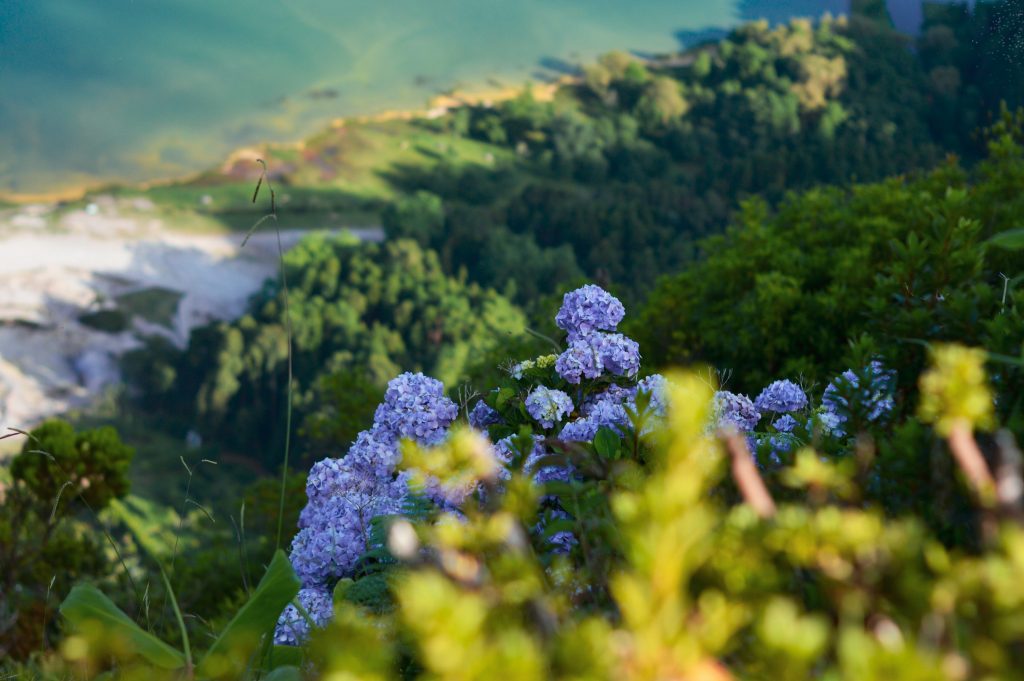
Getting to the Azores: Is This Actually Atlantis?
For years, the Azores were just a whisper among savvy travelers and Portuguese locals. But thanks to improved flight connections, it’s never been easier to get here. Direct flights from Lisbon and Porto take about two hours, while New York and Boston offer direct flights to São Miguel, the largest island, in about five hours.
The best way to explore? Inter-island flights and ferries. Azores Airlines will get you between islands quickly, but if you’re feeling adventurous (and patient), ferries offer a more scenic and budget-friendly route.
Which Azorean Island Is Right for You?
Each of the nine islands has its own distinct personality and charm, catering to different types of travelers. Whether you’re looking for adventure, relaxation, history, or culinary delights, there’s an island that perfectly suits your travel style. Here’s an in-depth guide to help you choose your ideal island getaway:
São Miguel – The Heartbeat of the Azores
São Miguel is the largest and most diverse island, offering a bit of everything: dramatic volcanic landscapes, lush forests, stunning crater lakes, and a thriving food scene. It’s home to Sete Cidades, a twin-lake wonder formed in a volcanic crater, and Lagoa do Fogo, a breathtaking high-altitude lake surrounded by untouched nature. If you’re a fan of hot springs, head to Furnas, where you can soak in geothermal pools like Poça da Dona Beija or Terra Nostra. Tea lovers will enjoy visiting the Gorreana Tea Plantation, the oldest and only tea plantation in Europe.
Best for: First-time visitors, nature lovers, and those who want a little bit of everything.

Terceira – History, Culture, and Festivities
Terceira is all about history, vibrant culture, and a lively atmosphere. The island’s capital, Angra do Heroísmo, is a UNESCO World Heritage Site filled with colorful colonial architecture, historic fortresses, and charming cobbled streets. Terceira is also famous for its energetic festivals, including the Sanjoaninas Festival, where locals celebrate with parades, music, and traditional bull-running events. Foodies will appreciate the local specialty, Alcatra, a slow-cooked beef dish marinated in wine and spices.
Best for: History buffs, festival-goers, and culture enthusiasts.
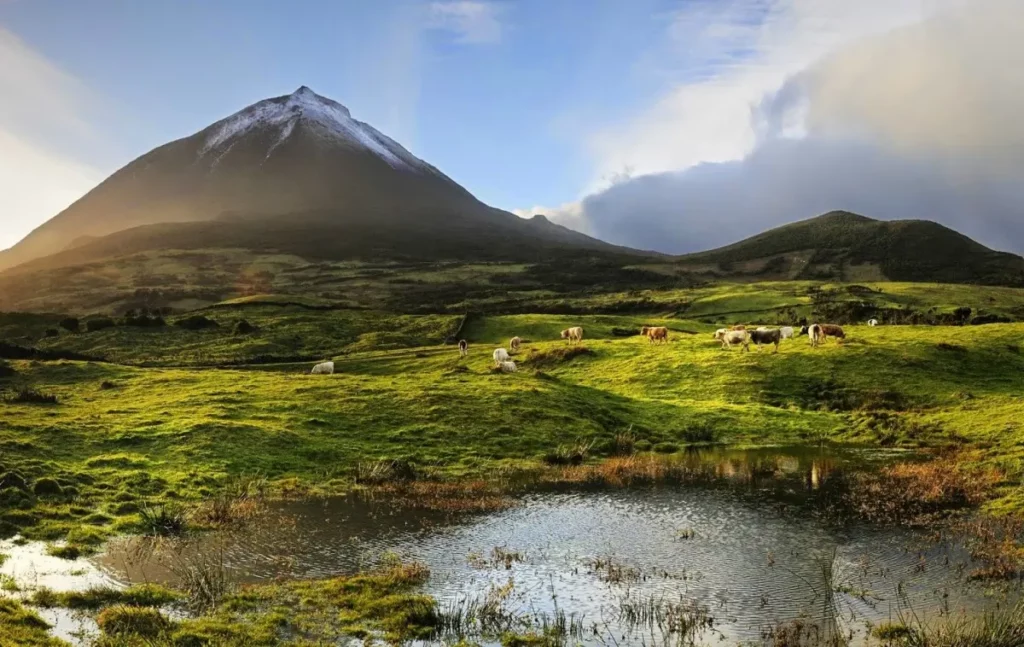
Pico – The Island of Wine and Adventure
Pico is dominated by Mount Pico, Portugal’s highest peak, making it a haven for hikers and adventure seekers. The climb to the summit is tough but incredibly rewarding, offering panoramic views over the surrounding islands. Pico is also famous for its volcanic vineyards, which produce unique, mineral-rich wines. These vineyards, with their distinctive black lava rock walls, are a UNESCO World Heritage Site. Don’t miss a wine tasting at one of the local wineries!
Best for: Hikers, wine lovers, and thrill-seekers.

Faial – The Sailing Hub with a Splash of Drama
Faial is known as the sailing capital of the Azores, attracting sailors from all over the world. Its charming marina in Horta is lined with colorful murals painted by visiting sailors. Faial is also home to the dramatic Capelinhos Volcano, where you can walk through an otherworldly, Mars-like landscape created by an eruption in the 1950s. Stop by Peter’s Café Sport, a legendary meeting spot for sailors and travelers alike.
Best for: Sailing enthusiasts, geology lovers, and social travelers.
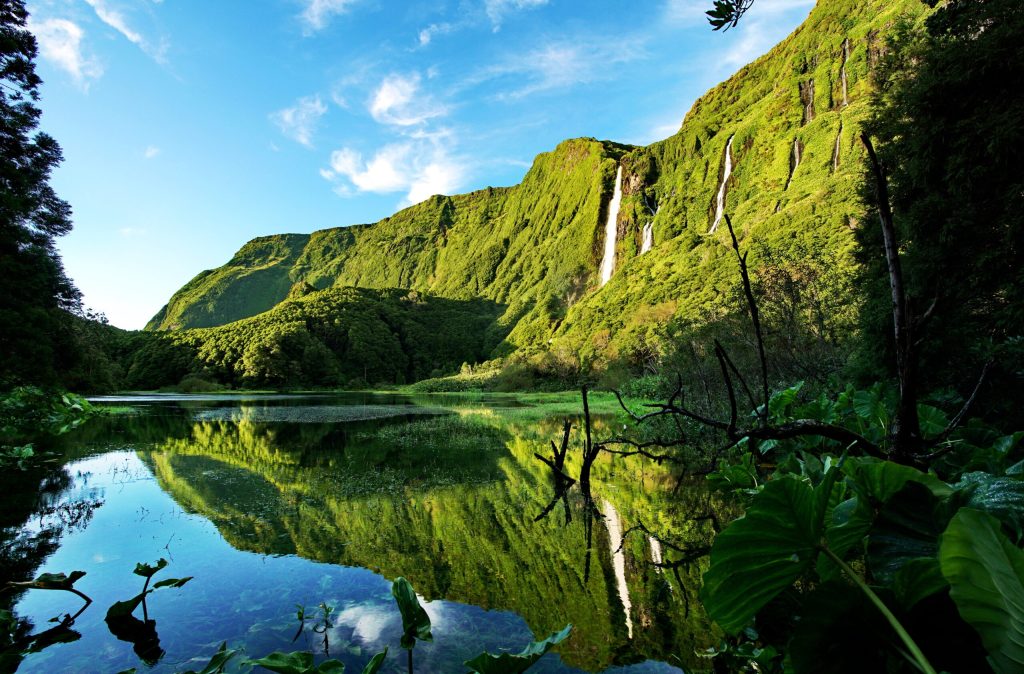
Flores – A Waterfall Wonderland
Flores is the wildest and most visually stunning island in the Azores, covered in towering waterfalls, deep valleys, and lush greenery. Hiking trails crisscross the island, leading to hidden lakes and jaw-dropping viewpoints. It’s the perfect place to disconnect and immerse yourself in nature. The Poço da Ribeira do Ferreiro viewpoint offers an unforgettable scene of cascading waterfalls against a backdrop of vibrant green cliffs.
Best for: Nature lovers, photographers, and hikers.
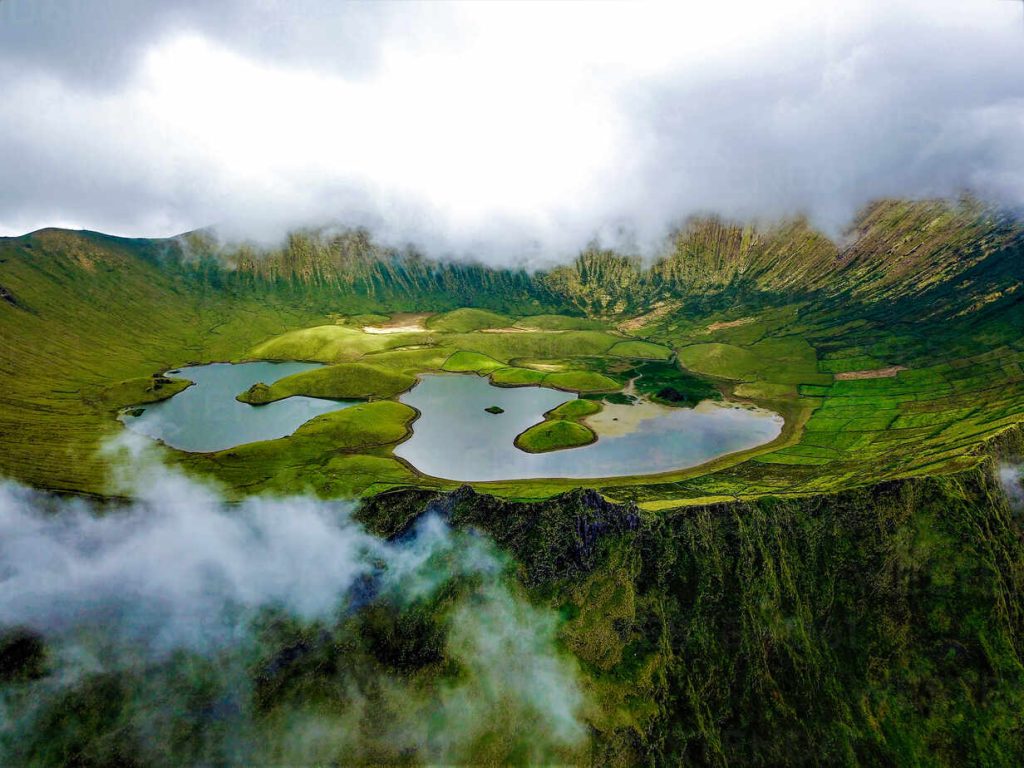
Corvo – The Ultimate Off-the-Grid Escape
Corvo, the smallest island in the Azores, is a true hidden gem. It has just one village and a population of fewer than 500 people. The main attraction is Caldeirão, a massive volcanic crater that offers stunning views and a sense of absolute tranquility. If you’re looking to escape crowds and experience a simpler way of life, this is the island for you.
Best for: Solitude seekers, off-the-grid travelers, and slow travelers.

São Jorge – The Land of Cheese and Epic Cliffs
São Jorge is all about dramatic landscapes and local delicacies. The island is famous for its fajãs, flat coastal plains formed by ancient lava flows, offering incredible hiking opportunities. The Fajã da Caldeira de Santo Cristo trail is a must for adventure seekers. And of course, you can’t leave São Jorge without tasting its world-famous cheese, known for its rich and slightly spicy flavor.
Best for: Hikers, foodies, and nature enthusiasts.
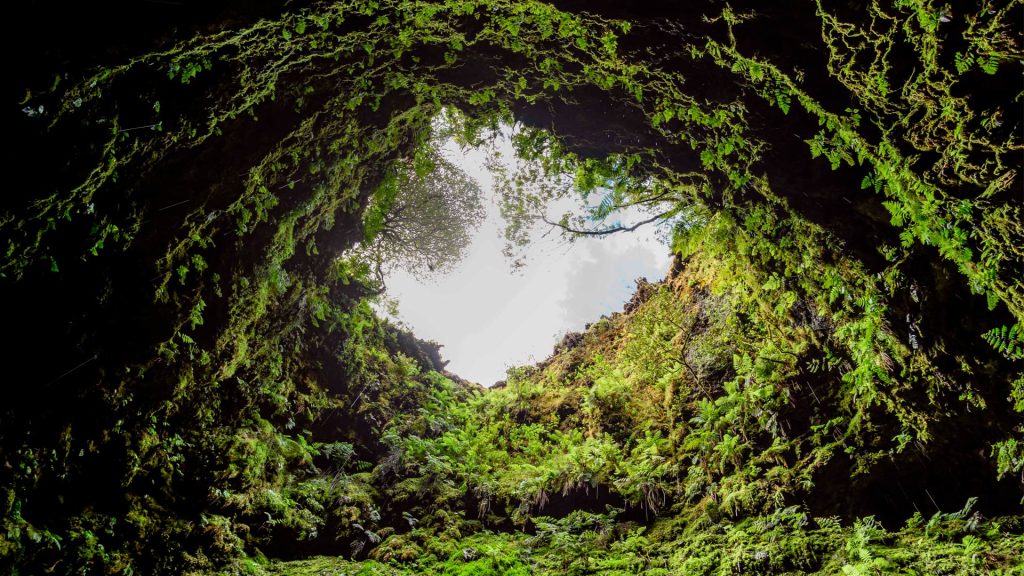
Graciosa – A Tiny Island with Big Surprises
Graciosa is one of the lesser-visited islands but offers unique experiences. It’s home to Furna do Enxofre, a massive volcanic cave with a bubbling underground lake. The island is also known for its windmills, laid-back atmosphere, and great diving spots.
Best for: Cave explorers, divers, and travelers looking for peace and quiet.

Santa Maria – The Azores’ Beach Getaway
Santa Maria is the sunniest and driest island in the Azores, with golden sandy beaches (a rarity in the archipelago). It has a more traditional Azorean feel, with quaint villages, terraced vineyards, and warm hospitality. If you’re craving beach time, Praia Formosa is the place to be.
Best for: Sun-seekers, beach lovers, and those looking for a relaxed vibe.
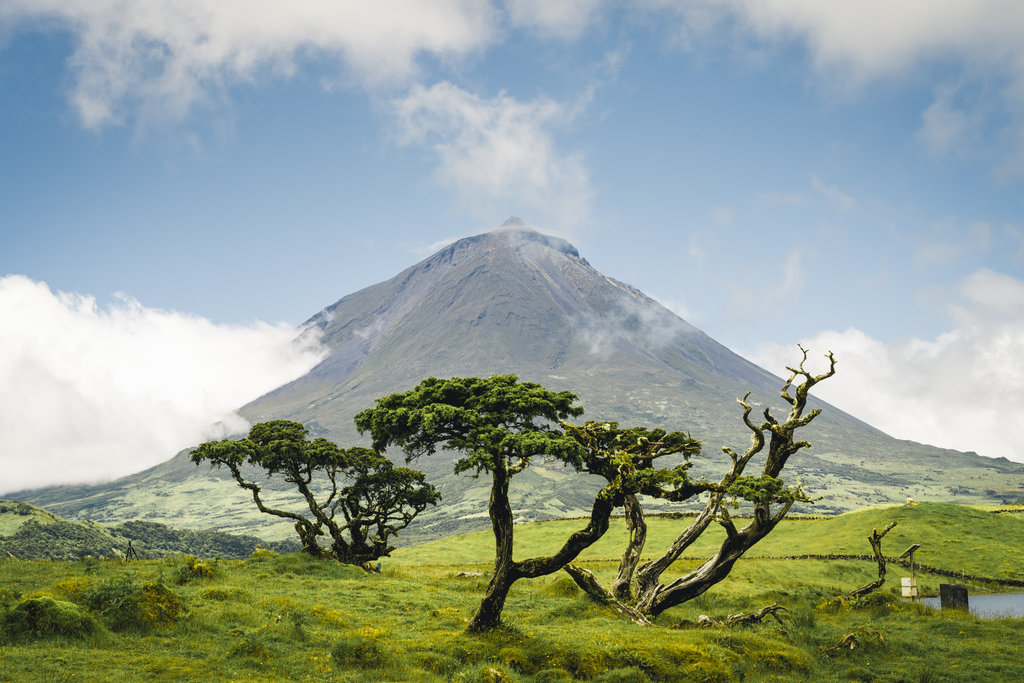
The Best Things to Do in the Azores (Beyond Staring in Awe)
1. Chase Volcanic Lakes on São Miguel
If there’s one image that represents the Azores, it’s probably the twin lakes of Sete Cidades. A crater formed by a long-gone volcano, these lakes—one blue, one green—look like something from a Studio Ghibli film. The best view? Miradouro da Boca do Inferno, hands down.
2. Soak in Hot Springs Like a Fancy Boiled Potato
The Azores sit on a tectonic hotspot, meaning geothermal activity is everywhere. Furnas on São Miguel is the place to experience this, with hot springs like Poça da Dona Beija and Terra Nostra Garden. Bonus: They cook food underground here—cozido das Furnas is a traditional stew slow-cooked using volcanic steam.
3. Hike Portugal’s Tallest Mountain on Pico
If you’re up for a challenge, Mount Pico (2,351m) offers an unforgettable climb. The trek is tough, but reaching the summit at sunrise? Worth every sweaty step.
4. Whale Watching (aka Living Your Best Nature Documentary Life)
The Azores are one of the best places on Earth for whale watching. Sperm whales, blue whales, and dolphins are frequent visitors, making this a must-do. Go with a responsible tour operator—many work alongside conservationists to protect marine life.
5. Wander Through a Real-Life Jungle on Flores
Flores is green—like, aggressively green. Waterfalls cascade from cliffs, hydrangeas bloom in every direction, and hiking here feels like stepping into Jurassic Park (minus the dinosaurs).
6. Drink Wine Grown in Lava Fields on Pico
Azorean wine is a thing, and it’s glorious. Pico’s vineyards, with vines growing between black volcanic rock walls, produce unique, mineral-rich whites that pair perfectly with fresh seafood.
7. Get Lost in UNESCO-Listed Angra do Heroísmo
Terceira’s colorful, historic capital is one of the prettiest towns in Portugal. Think cobbled streets, pastel houses, and an oceanfront fort. Also, they throw epic festivals here—locals know how to party.
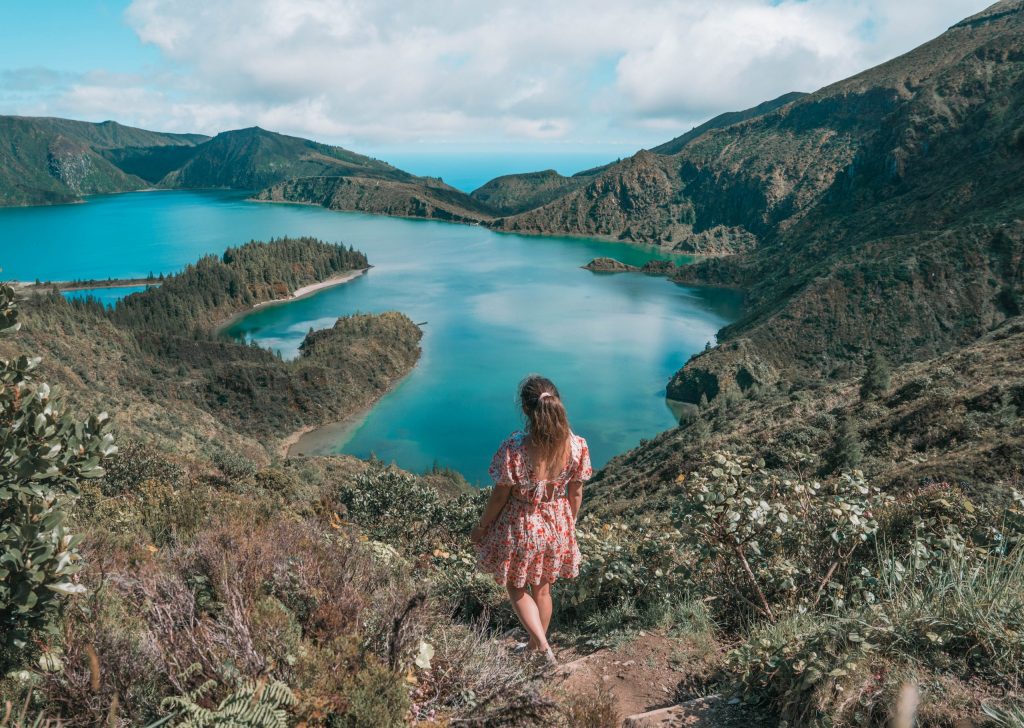
Eco-Friendly Travel in the Azores: A Must, Not a Maybe
Sustainability isn’t a buzzword in the Azores—it’s a necessity. The islands are a designated UNESCO Biosphere Reserve, meaning conservation efforts are woven into daily life. Here’s how you can be a responsible traveler:
Use public transport, bike, or hike – Car rentals are common, but the islands are small enough to explore more sustainably.
Respect nature – Stay on trails, don’t pick plants, and keep noise levels low to protect wildlife.
Choose sustainable accommodations – Many lodges and guesthouses prioritize eco-friendly practices.
Eat local – Fresh, local seafood, island-grown produce, and volcanic-cooked dishes are all part of the experience.
Weather is unpredictable. Pack layers, waterproofs, and a sense of humor. One minute it’s sunny; the next, you’re in a cloud.
Don’t rush. Azorean life moves at a slower pace—lean into it.
Learn a few words of Portuguese. It goes a long way (even if it’s just “obrigado/a” for thank you).
Bring good hiking shoes. The best spots often require a bit of effort.
Try everything. From local cheeses to volcanic wines, don’t hold back.
Final Thoughts: Should You Book a Trip to the Azores? (Yes, Obviously.)
If you love adventure, jaw-dropping landscapes, and destinations that haven’t been overrun by mass tourism, the Azores should be at the top of your list. It’s one of Europe’s best-kept secrets—at least, for now.
So go, hike those crater lakes, soak in those hot springs, and sip that wine. Just don’t tell too many people about it. Let’s keep this paradise as magical as it is for as long as possible.